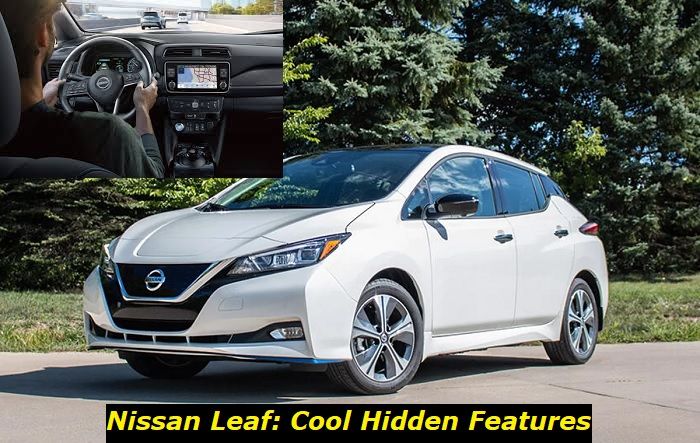
Honda CR-V is a reliable car and one of the best affordable SUVs on the market. It has gained immense popularity amongst the public, especially over the last two decades. However, like any other car, the CR-V isn’t perfect.
One common problem that a CR-V may encounter is a special type of air conditioning (AC) failure. Experts call it the Black Death. This mechanical issue isn’t new. It has affected many Honda models since the 2000s but the CR-V appears to be most at risk.
But what is the Black Death anyway? How would you know if you have it in your Honda CR-V? What if you have it; how can you deal with it? And are there ways to protect your car from contracting it in the first place? This is our quick guide to help you answer these questions.
What Is The Black Death In The Honda CR-V?
The Black Death happens in engines when engine oil solidifies at temperatures normally lower than 100°C. From here, a black "sludge" accumulates in the internal combustion engine resulting in problems. These problems can become serious and require you to replace the engine.
In Honda CR-V, the Black Death commonly forms in the compressor of the car’s AC system when the refrigerant breaks down. The refrigerant is a special mixture formulated primarily to change the hot air into the cold. During the refrigerant breakdown, sharp and greasy particles infect the entire AC system causing great damage.
Signs Of The Black Death In Your CR-V
Seized Air Conditioning Compressor
One symptom that many Honda CR-V owners notice is a seized air conditioning compressor the first time when the system fails. Usually, the air compressor will suffer the "imploding" problem. That’s when the internal components will shatter completely and debris is forced throughout the AC system.
Every associated component will get plagued making the compressor become seized or "locked up." All the debris and metal pieces are imploded throughout the air conditioning system causing a complete disaster, consequently the phrase Black Death.
Finicky Behavior
The AC system in your Honda CR-V may also start behaving a bit finicky. That is, it’s still blowing a lot of cold air but steadily only at high RPMs. At idle, the system produces cold air. But not as cold as while in motion.
Also, at idle, the RPMs dip low to a point where the vehicle feels like it’s going to stall. The whole engine shakes and you hear the compressor trying to cycle on but again shuts right away. It does that for about 5 seconds while at idle. When you start moving, the system runs fine only with immense horsepower draw that you can feel while the car is getting in motion.
You may suspect the refrigerant, compressor oil, or anything. The problem is that your mechanic may not notice any symptoms at first or they may advise you to replace the compressor. At this point, your AC compressor hasn’t imploded and there’s no black smoke in the vents. You only feel like the compressor is having a lot of resistance at idle.
Indeed, you don’t want to spend thousands of dollars to replace the entire AC system yet. But these could be the symptoms of the Black Death!
AC System Failure Soon after Repair
There could be several causes of AC system failure soon after repairing but the Black Death is the main cause. Your air conditioning system won’t feel the same again once it has been infected.
Repairing the AC system is time-consuming and expensive. So, it sucks when you have repairs after repairs and the system doesn’t seem to perform optimally. Usually, it’s difficult to identify the level of the damage. Many Honda CR-V owners try replacing the compressor only.
Though this might be money and time-saving, it can turn out to be a costly repair in the long run. The Black Death contamination will soon creep into the newly installed parts causing another failure. You may be having the Honda CR-V Black Death if your AC system breaks down continually and no one seems to identify the problem after it was fixed the first time.
Can weak airflow be a symptom of the Honda CR-V Black Death?
Well, many things are involved here but it may still be a possible sign. You should take your car for professional inspection if you realize reduced airflow as soon as possible to prevent fatal damages. Some of the causes include:
- The hose delivering air to the blower is loose
- Mold or mildew accumulating in the evaporator coil
- Malfunctioning ventilation fan
- Open Seals – Open evaporator core case seals, core case seals, or blower house seals can compromise the entire AC system.
How To Repair The Black Death in Your CR-V

Honda CR-V Black Death is different from other types of air conditioning system failures. When you shut down the system and it starts to cool, the black sludge will solidify and harden over every surface. And even after replacing the compressor, the repeated ON/OFF cycles of the AC system will facilitate the hardening of the sludge, making it extremely hard to remove.
It’s impossible to eliminate the contamination even with the best AC flushing system. So, don’t get tempted to go for a system flush and trust that it will be powerful enough to get rid of the Honda CR-V Black Death sludge. The flushing won’t effectively remove the tiny particles from the hoses, condenser, and the microscopic orifices lodged in the expansion valve. But, how does the AC system flushing happen?
- You have to remove the refrigerant. To do that, start by switching off the indoor thermostat. Identify the low-pressure side of the refrigerant. Locate the suction side of your compressor also. Using a wrench, close the serve valve located on the low-pressure side of the condensing unit. After that, close the servo valve of the high-pressure side just a little.
- Dismantle the AC system and remove the components that don’t require flushing.
- Dismantle the components that you need to flush
- Remove the evaporator
- Start flushing
- Reassemble the components
- Purge the AC System
- Vacuum, perform a leak test, and recharge
The most effective way to restore optimum operation for your Honda CR-V AC system is to replace the entire system. In other words, there’s no simple way of repairing the system once it has been infected with the Black Death. You have to replace these parts:
- System Oil
- The AC Compressor
- System Seal Kit
- Both high side and low side AC Hoses
- Condenser (Drier attached)
- Evaporator
How To Protect Your Car From Becoming Infected With The Black Death
Repairing the Honda CR-V Black Death in the AC system is expensive, time-consuming, and frustrating. You don’t want to get this problem; spend thousands of dollars on AC system replacement and hours in the service bay. So, you must do whatever it takes to keep your SUV safe.
Tip #1: Prevent Moisture Contamination
AC systems can protect themselves from moisture contamination automatically. This built-in protection is known as a desiccant, and it consists of crystals in a small pouch inside the receiver-drier. The crystals absorb moisture and keep the system safe under normal conditions.
However, the protection isn’t enough, especially if you leave a hose open overnight or there’s a refrigerant leak. For that, you should replace the receiver-drier immediately if the system has experienced a moisture contamination issue.
Tip #2: Deal with the Engine’s Radiation
The radiation from the engine can compromise the performance of your AC. Avoid this by insulating the system’s cold pipe using the right insulator. You should find one in your local auto shop.
Tip #3: Check for any leaks
Check for possible leak problems using an effective method. You can utilize a leak detector such as fluorescent tracer dyes. If you learn that the refrigerant has or is in the process of breaking down, change it right away.
Tip #4: Check Other Components
If the AC system develops a problem, and you learn that the compressor or the refrigerant isn’t the cause, then your next course of action should be to examine other components. Coils, fan belts, hoses, condensers, or switches could be the cause of the problem.
Tip #5: Regular Check-ups
The best way to protect your Honda CR-V against the Black Death is by taking it for regular check-ups. That will keep Freon leaks away and prevent the refrigerant from breaking down.
Final Thought
The Honda CR-V Black Death can infect your vehicle’s AC system and lead to expensive repairs. Some of its symptoms include the system’s finicky behavior, failure soon after repair, and seized compressor. The best way to solve the problem is by replacing the entire AC system. There are many ways to protect your car from the Black Death. They include checking for refrigerant leaks regularly. Taking it for check-ups regularly happens to be the most effective way!
About the authors
The CarAraC research team is composed of seasoned auto mechanics and automotive industry professionals, including individuals with advanced degrees and certifications in their field. Our team members boast prestigious credentials, reflecting their extensive knowledge and skills. These qualifications include: IMI: Institute of the Motor Industry, ASE-Certified Master Automobile Technicians; Coventry University, Graduate of MA in Automotive Journalism; Politecnico di Torino, Italy, MS Automotive Engineering; Ss. Cyril and Methodius University in Skopje, Mechanical University in Skopje; TOC Automotive College; DHA Suffa University, Department of Mechanical Engineering






Add comment